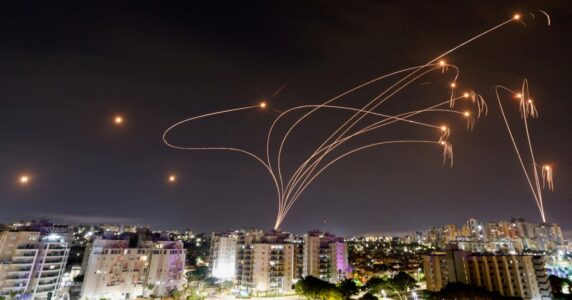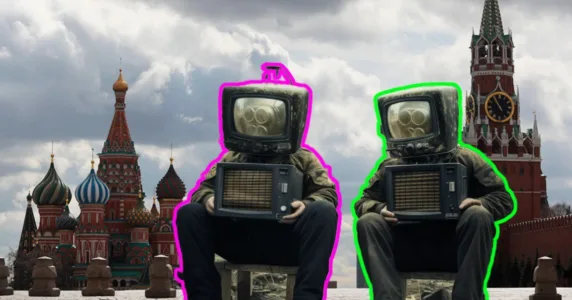Navigation and useful materials
On April 18, in the battle near Popasna (Luhansk oblast), the defenders of Ukraine killed 10 enemy soldiers who turned out to be militants from Libya. This was reported by Anatolii Stirlitz and Yurii Butusov with photo evidence.
Journalists have suggested that the participation of Libyans on the Russian side is directly related to the agreements reached during Khalifa Haftar’s visit to Moscow on March 20 this year. Field Marshal Haftar was one of the key participants in the Libyan Civil War (2014-2020), in which the Russians actively intervened on his side.
The idea of involving Arab mercenaries in the war with Ukraine was first publicly voiced by Russian Defence Minister Shoigu during a meeting of the Russian Security Council on March 11. According to him, more than 16,000 volunteers from the Middle East have already applied. To this, Putin replied that Russian leaders “need to welcome them and help them move to the war zone.”
Since then, photos from Popasna have become the first and so far, the only reliable evidence that Middle Eastern militants are already fighting on the side of Russian invaders.
However, even before the news of the killed Libyans, the Centre for Strategic Communication learned about the possible presence of mercenaries from Syria in the north of Kyiv oblast, when the territory was under Russian occupation.
Between March 22 and April 1, an Arabic inscription appeared on the wall of a private household in Dymer, possibly referring to the Syrian military group Tiger Force.
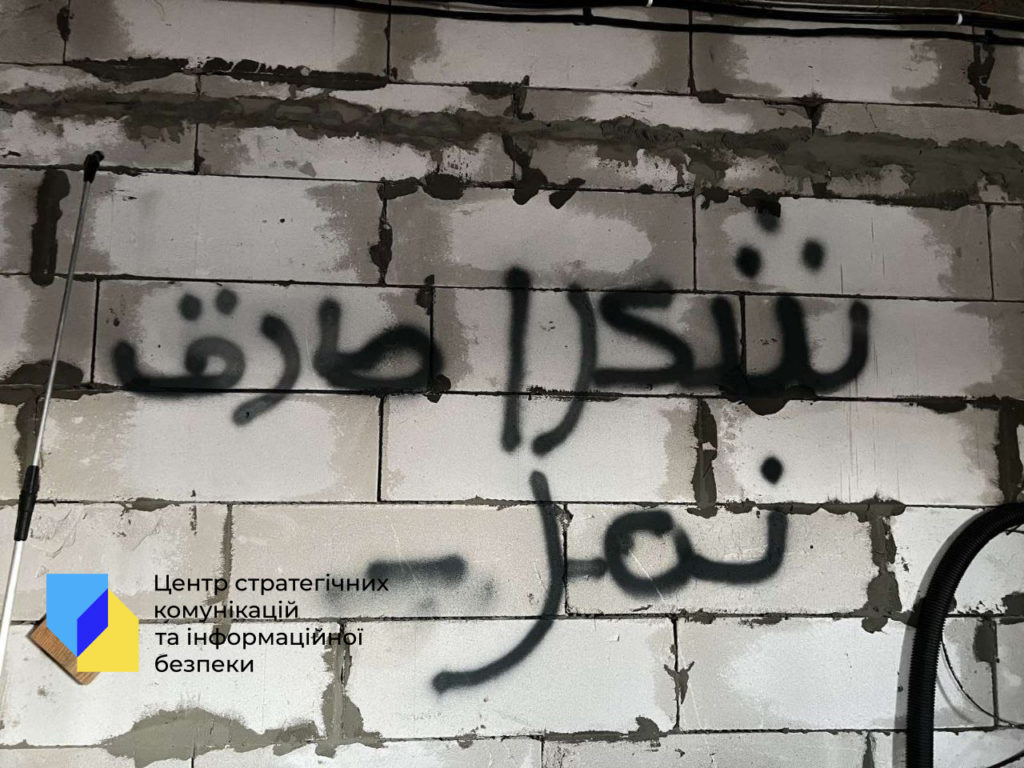
The owners and their neighbours did not see Arabs in Dymer. Due to the Russian occupation, they temporarily left the village, so they do not know who was staying in their yard.
The northern Kyiv oblast was an operational zone of the Russian 35th General Army. Dymer was occupied by the 45th Brigade of the Airborne Special Forces. Of course, the inscription could be left by Russians who had fought in Syria previously. It would be difficult to verify who made the inscription. However, the version of uninvited guests from the Middle East should be considered as a starting point for further investigations.
As in the above-mentioned Libya, Russia is an active participant in the civil war in Syria. Together with Tehran, Moscow effectively saved President Bashar al-Assad’s regime from defeat. In the interests of the Assadists, Russia conducted a campaign of aerial bombardment of Syrian cities. Assad was supplied with weapons. Instructors trained the government army (and often even gave it orders). Moscow secretly sent both private military companies (the infamous “Wagner” group) and regular units of the Russian Armed Forces to fight in Syria.
As a result, the Syrian regime has become dependent on Russia. Assad cannot deny Putin anything. In fact, Russians and Iranians, not Arabs, rule Syria now.
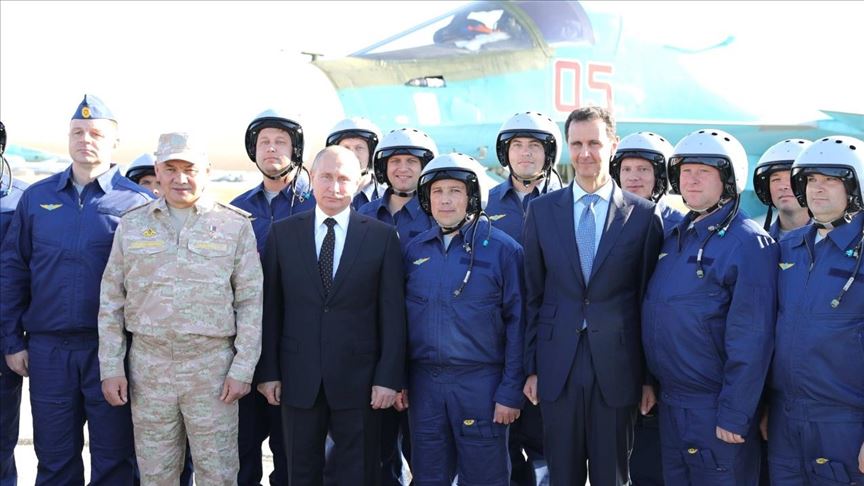
Insider reports of a Russian campaign to recruit Syrians to the war in Ukraine began to emerge even before Shoigu voiced the idea. The Wall Street Journal reported it on March 6, and the next day the information was confirmed by the US Department of Defence.
On March 17, the Ukrainian General Staff announced the possibility of the Russians recruiting about a thousand militants from Syria and the Lebanese organization Hezbollah. The report emphasized that the main requirement for mercenaries was the experience of urban battles.
It is possible that the nature of the Syrian civil war, where the main fighting is taking place in dense urban areas, is crucial for the selection of militants from this country. In this case, the Syrians from Dymer could be preparing to storm Kyiv.
On the other hand, the huge losses in Ukraine are forcing Russian generals not to be too picky about where to get recruits. In Syria, ravaged by civil war, there is a surplus of men with combat experience who are ready to fight elsewhere for money. The Russians have virtually unlimited access to this resource, as they commanded the Syrian government forces in battles with enemies of the Assad regime.
Russian commander of the invasion forces Alexander Dvornikov, appointed in April, headed the Russian Armed Forces group in Syria during the most intense fights for Aleppo in 2015-2016, which resulted in his nickname “Syrian butcher.”
However, independent experts do not think too highly of Syrians’ combat qualities and are sceptical about the possibility of recruiting several thousand mercenaries. Of course, Assad will promise Putin anything, but there is no enthusiasm at the grassroots level.
Syrian forums and chats actively spread rumours about the dire conditions in Ukraine: cold, hunger, cruelty of Ukrainian soldiers to foreigners (thanks to Russian propaganda about the Nazis). While mercenaries are expected to storm Ukrainian cities, Syrians themselves rely mostly on safe work in the rear, such as standing at checkpoints or guarding captured objects. Many “volunteers” see the trip to Ukraine as a chance to escape from Syria destroyed by Assad and Putin to Europe.
In such circumstances, the Russians have to rely on small but well-prepared and motivated groups, tested by the common experience of fighting and war crimes.
One of them is the Syrian 25th Special Purpose Division, formerly known as the “Tiger Forces.” It is likely that the militants of this group were the ones who left a message in Dymer.
Despite its formal affiliation with Assad’s armed forces, the Tiger Forces is more of a personal group of its commander, General Suheil al-Hassan. In addition to the permanent staff, there are also various militias who consider themselves part of the “Tigers,” who mostly remain in their cities until called upon to join another military operation.
Suheil al-Hassan created his own unit already during the civil war. He established himself as a successful field commander. The Tigers under his command launched a series of victorious offensives against anti-Assad opposition forces.
It is known that the “Tigers” are closely associated with the special operations forces of the Russian Federation. Al-Hassan is actually one of the main representatives of the pro-Russian party, which competes for influence over the regime of Bashar al-Assad with a pro-Iranian group.
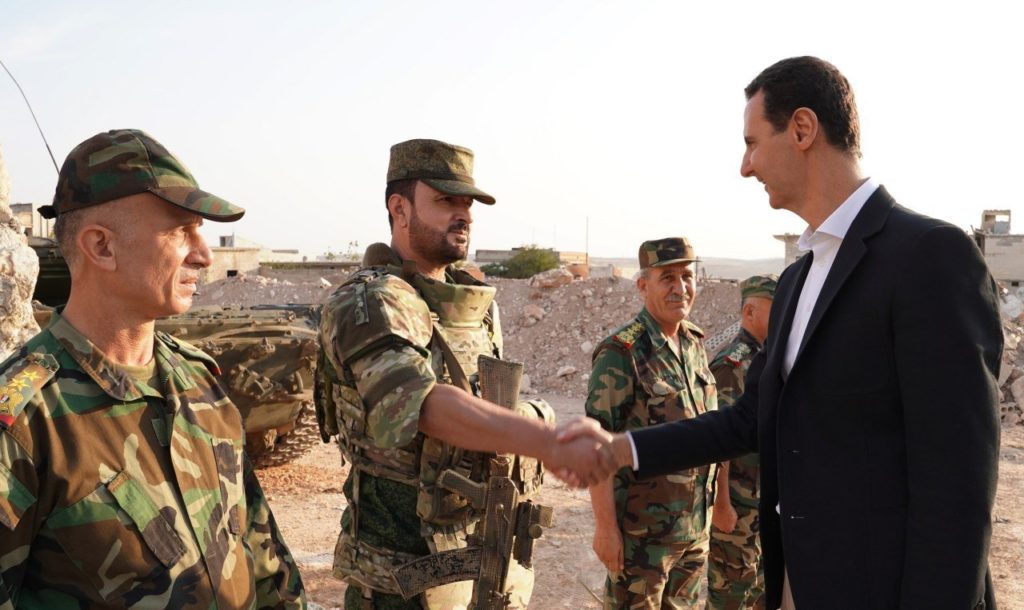
Suheil al-Hassan has been generously rewarded by his Russian friends. He was awarded the Medal for the Liberation of Palmyra, the Order of Friendship, the Order of Suvorov, and a cold steel award from the Minister of Defence Shoigu.
In early April this year, videos with military exercises of Tiger Forces getting ready to relocate to Russia appeared on Assad’s channels. The militants practised, in particular, parachute jumps from helicopters. One of the videos also featured Russian instructors. It is unclear exactly when these exercises took place.
“Tiger” services in Ukraine are estimated to cost about USD 1,200 a month during half a year and then a USD 3,000 bonus after returning to Syria. The families of those KIA are promised a one-time payment of USD 2,800 and a monthly compensation of USD 600 during a year. In Syria, these soldiers are paid USD 100 a month, and soldiers from lower-level units just USD 50 a month.
According to Rami Abdul-Rahman, head of the Syrian Observatory for Human Rights (UK), about 700 Tiger Forces mercenaries have already left Syria in April to join the fighting in Ukraine. However, this number cannot be confirmed from other sources at this time.
If you have found a spelling error, please, notify us by selecting that text and pressing Ctrl+Enter.
